This is a free fortnightly newsletter about the New Zealand Net.
If you would like to be notified by email when a new edition is published, please subscribe here.
Browse our Newsletter Archive and List of Net Tips.
Featured key
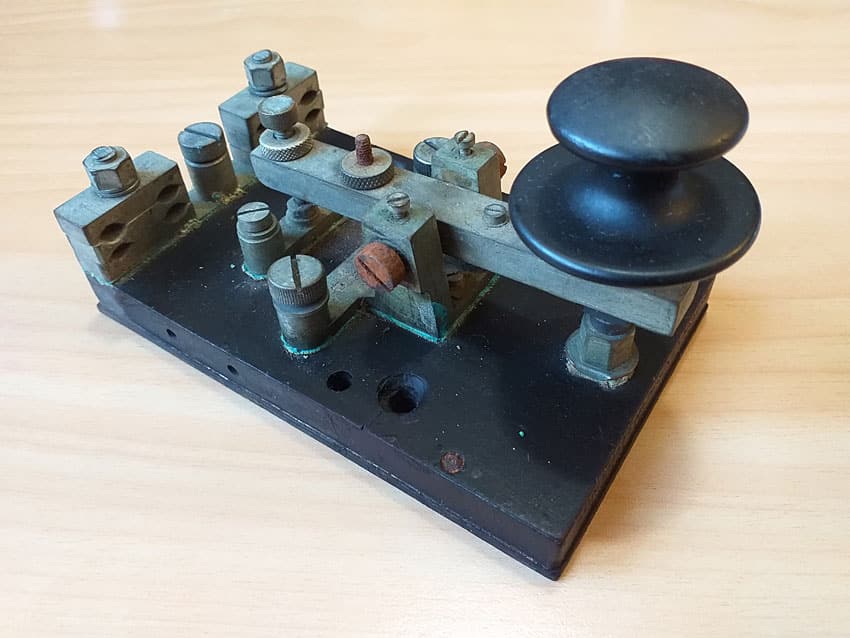
Photo: ZL1NZ
By Neil ZL1NZ
As you can see, this Royal Navy key is in “unrestored” condition, but it has proved quite serviceable following some basic cleaning and lubrication. It’s an Admiralty Pattern No. 7681 key, made in 1937, and I used it on our most recent Straight Key Monday.
I like the impressively large contacts and the monstrous cable clamps. It is a noisy key, but the resonance is nice, sort of like the click/clack of a landline sounder. I also like the clever tension adjustment, which is in steps. You lift the knurled ring, then turn it enough so that it will drop into the next position.
Some of the AP7681 keys had a substantial sheet metal enclosure which is quite interesting too. See photos and more variations of this key on the M6BRN website.
Quick notes
 Perhaps you remember this photo from NZ Net News 94, way back in November 2022. And you might also have wondered: “Whatever happened to that big tower last seen on a trailer heading towards Dunedin?” We have answers, later in this edition!
Perhaps you remember this photo from NZ Net News 94, way back in November 2022. And you might also have wondered: “Whatever happened to that big tower last seen on a trailer heading towards Dunedin?” We have answers, later in this edition!
Museum Ships Weekend (0000Z 7 Jun – 2359Z 8 Jun) will include two Australian ships among more than 100 participating vessels worldwide (to the best of my knowledge, NZ has no museum ships with amateur radio). Listen for MV Cape Don VK2AEJ and HMAS Vampire VK2VMP, both in Sydney. Hopefully there will be some CW operation.
SteppIR bows out. SteppIR, the US company that made very expensive aerials that automatically adjusted in length to match the operating frequency, has announced it is exiting the amateur radio market, effective 31 August. They have not given a reason for the change, but say they will continue making aerials for commercial customers.
ZL100IARU is a special event callsign for the centenary of the International Amateur Radio Union. A special event QSL card has been printed and confirmation is also on LOTW and QRZ.com. The callsign is operative until 31 July 2025. QRV most evenings as band conditions permit on CW, SSB and FT8. More info.
Mugshot
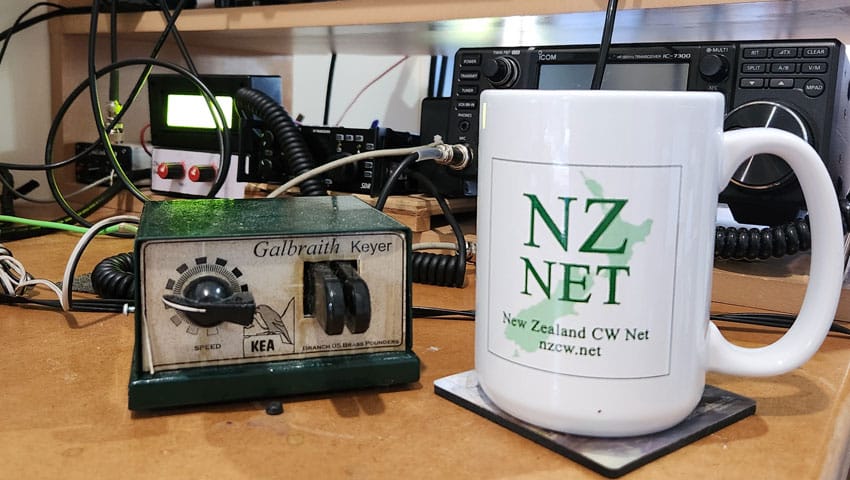
Two Kiwi classics in one picture: the lovely Galbraith KEA electronic keyer and the NZ Net coffee mug. Photo taken in the shack of Don ZL3DMC.
Net numbers

NR14 R ZL1NZ 41/38 AUCKLAND 0900Z 2JUN25 = MAY QNI VK3DRQ 28 VK4PN 11 ZL1AJY 2 ZL1ANY 31 ZL1AUN 4 ZL1BDS 14 ZL1NZ 30 ZL1PX 18 ZL2GD 21 ZL2KE 12 ZL2LN 12 ZL2WT 13 ZL4AA 1 ZL4GW 18 ZL4KX 23 ZL4LDY 13 TOTAL 251 QTC 18 = ZL1NZ
Congratulations to ZL1ANY on perfect attendance. 🙂
Cryptic QNC
 By Peter ZL1PX
By Peter ZL1PX
TWELVE LETTERS STOP SCRAMBLY TARNS TO AN EARLIER TIME ARE GREAT FOR MATCHING IMPEDANCE
Clue 1. SCRAMBLY indicates a re-arrangement of TARNS (starn, rants or trans).
Clue 2. AN EARLIER TIME could point to PREVIOUS, FORMER, PRIOR, PRECEDING, BEFORE…
Clue 3. ‘ARE’ means the answer is plural.
Clue 4. MATCHING IMPEDANCE is often achieved by a transformer.
Answer: TRANSFORMERS
NINE LETTERS STOP SEARCH NEAR SCONE FOR THE IDEAL DIPOLE ANTENNA PROPERTY
In this example ‘SEARCH’ means the same as ‘SCRAMBLY’ in the previous cryptic, i.e. re-arrange the letters of NEAR SCONE. Other possible combos are SANE CRONE and SCARE NONE. A vital condition of the dipole antenna is that it is ‘impedance matched’ or ‘resonant’.
Answer: RESONANCE
Listen for Cryptic QNC every month on NZ Net.
It’s up!

By Bede ZL4KX
I was pondering how to raise my 60-foot (18.3m) tower, when an old friend, Graeme ZL4THQ, paid a visit and suggested using a HIAB-type crane. I hadn’t thought such cranes could go high enough, but it turned out I was able to hire one with a 20-metre lift.
Graeme and I assembled the tower, comprising six sections of Rohn 55, on the ground. Then, on 26 May, the crane operator raised the tower in one piece, lifting it from the top end. Everything went well, as things had been prepared beforehand.
It’s a very strong (and heavy) tower. There are 7 cubic metres of concrete in the base and guy anchors. There was virtually no movement when I climbed it to detach the lifting strops.
 Three guys are attached to the tower at the 50-foot level. These are Parafil synthetic guys. These are great as they allow antennas right next to them without any effect.
Three guys are attached to the tower at the 50-foot level. These are Parafil synthetic guys. These are great as they allow antennas right next to them without any effect.
One very good item is used on the guy wires at the end of the Parafil. They are Preforms, widely used in the electrical industry. They wind around the EHS galvanised wire and are rated at the same breaking strain as the wire. We put three of them onto the guy anchors in less than 10 minutes. Much better than wire clamps! (See left-hand photo.)
I have relocated my 80m dipole to the 50′ level, its noticeably better on Manny. Eventually I will get a 40m Delta loop and a 20m to 10m beam up on top.
I was helped by Greg ZL4GW, Ken ZL4NR and Nick ZL4NY. They were invaluable!
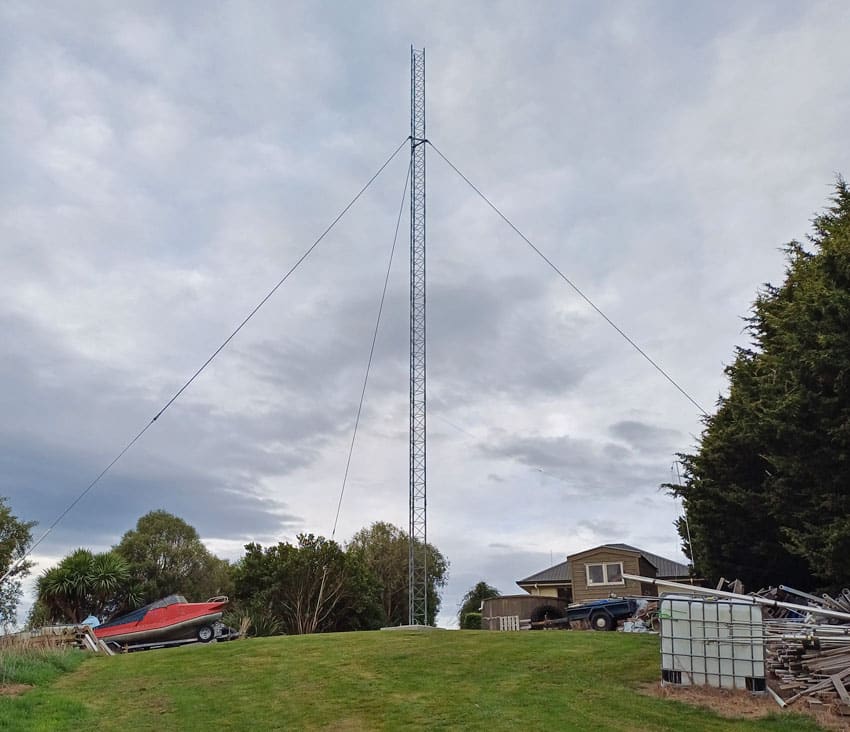
Straight Key Night this Sunday
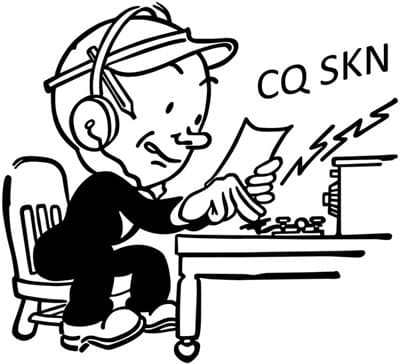 By Neil ZL1NZ, SKN Manager
By Neil ZL1NZ, SKN Manager
Are you ready for SKN? The Winter Edition of NZ Straight Key Night will run 8-9pm, Sunday 8 June on 80 metres. I hope you’ll join us for an hour of old-time brass-pounding. You can find all the details on the SKN webpage, but here are a couple of important things I’d like to tell you about:
1) During SKN we use the QSY Rule, so if someone answers your CQ please shift frequency after completing your contact.
2) The rules of SKN specify straight keys only, but any operator who cannot use a straight key by reason of disability is warmly invited to participate with any type of key they can use, even a keyboard (although they will not be eligible for the Best Fist Award).
3) Please pay attention to the quality of other operators’ sending, so that you can send in your nomination for the Bruce Scahill Best Fist Award. During the most recent event, no one won this award due to a very low number of nominations, so please help us recognise high-quality, hand-generated Morse. (I do this on my log sheet by “grading” each fist I hear, with the very best ones getting an A+.)
4) And, finally, why not add even more fun to SKN by using an older rig, if you have one. It makes the contest exchange even more interesting when we can not only visualise the key being used, but also enjoy the sound of a vintage transmitter.
73/77 and let’s make some noise on 8 June!
Video: Keymanship – part 2
I hope you enjoyed the video in NZ Net News 159. Here is part 2, in which Chris Rutkowski NW6V, author of The CW Way of Life, explores the link between Morse Code and our brains.
Net tip: QNK
We continue our look at Q signals with QNK (x,y), a Q Signal that is only used by Net Control.
It means: “Transmit message(s) for _____ to _____ (on this frequency”.
The first field is compulsory, the second is optional, and “on this frequency” is implied even though it’s not in the ARRL’s definition. Here are some examples.
NCS: ZL4GW QNK ZL1BDS (“ZL4GW please send your traffic to ZL1BDS”)
NCS: ZL2TE QNK ZL4LDY ZL2KE (“ZL2TE please send your traffic for ZL4LDY to ZL2KE”) This implies ZL2KE will relay the message.
As you know, most net traffic is handled off-frequency during the net in order to keep the net frequency clear for other stations to check in. There are times, however, when a single station is involved in multiple pieces of traffic. It may not be possible to clear all that traffic off-frequency, as NCS will want to have all stations on-frequency to copy any QNC before closing the net in a timely fashion.
In these cases, NCS may direct that remaining traffic be cleared on-frequency after excusing all stations not required for the traffic. That’s when you’ll hear QNK being used.
The A-Z of Q Signals

A well-run CW net is a lovely thing to experience. Communication between stations is quick and concise, and the net business is conducted with minimal time wasted.
As CW operators, we have many techniques to communicate quickly and efficiently. And if we know and use these techniques, we can often match or exceed the speed and accuracy of voice communication.
One of our most important tools is the set of Q Signals (or Q Codes), and in this series we look at the “essential” ones, in alphabetical order.
Advertising archive
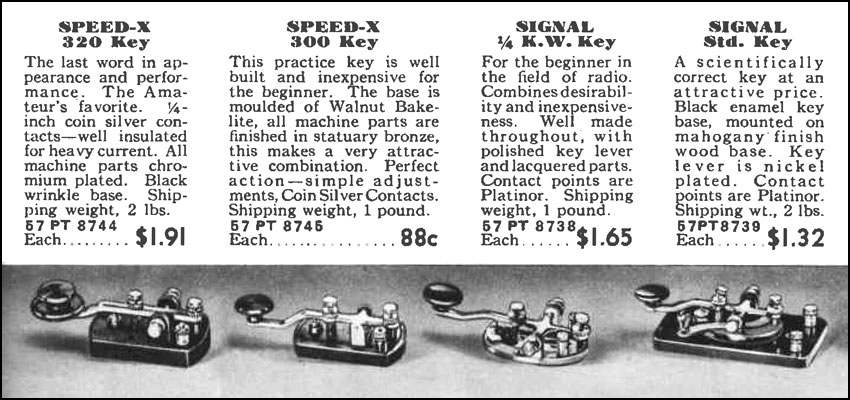
Sears department stores in the USA had all sorts of wonderful things in their mail-order catalogues. These straight keys were offered in the 1940 edition. (Yes, you could order a bug if you preferred.)
Suggestions?
If you have suggestions on how to make the NZ Net better, or things you’d like to see covered in these newsletters, please contact ZL1NZ. Articles and photos will be gratefully received!
Thanks for reading, and I hope to hear you soon on the NZ Net!
—
Neil Sanderson ZL1NZ, Net Manager
New Zealand Net (NZ NET)


